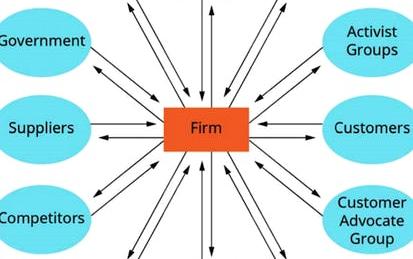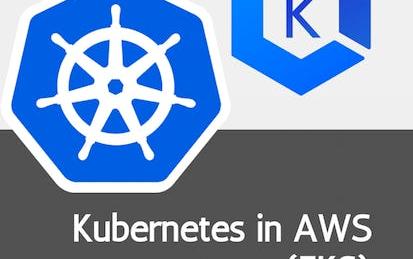

Our Courses

Engineering of Structures: Compression
This course deals with compression. When we push an object, it compresses. Compression is what's going to hold up our building. Arches, vaults, domes, and anti-funicular forms help resist compression. In this course, you will learn about different columns and arches and their role in resisting compression. You'll also build anti-funicular forms. The first module introduces you to the topic compression and familiarizes you with the key terms related to compression. The second module deals with topics such as columns, arches, and other anti-funicular forms.
-
Course by

-
 Self Paced
Self Paced
-
 12 hours
12 hours
-
 English
English

Strategic Management - Capstone Project
In this capstone project course, we revisit the strategy controversy at e-Types, introduced in the first course in this specialization, Strategic Management, and further analysed in each of the subsequent courses, Strategy Formulation and Strategy Implementation. After revealing, examining, and analyzing what happened at e-Types, we turn to a new set of strategy cases that range in terms of company size, geography, and focus. For your final project, we ask YOU to apply everything you have learned in this specialization to analyze your choice of one of these four situations.
-
Course by

-
 Self Paced
Self Paced
-
 7 hours
7 hours
-
 English
English

English Lower Intermediate B1.1
Welcome. This is the first of our 2 courses in English to take you to a B1 level of competence. English is the most important international language for the workplace and for study. The varied learning activities on this course will enable you to communicate effectively in a variety of situations and on a range of important topics like daily life, travel and food. This course will help you become an independent user of the English language, able to cope with practical situations while abroad, such as finding work, accommodation and creating a social network.
-
Course by

-
 Self Paced
Self Paced
-
 22 hours
22 hours
-
 English
English

Build a Relative Layout App in Android Studio
In this course you will build an Android app with a Relative Layout in Android Studio with the java programming language and will be given an explanation of Relative layout.
-
Course by

-
 Self Paced
Self Paced
-
 3 hours
3 hours
-
 English
English

Generate an Opportunity Solution Tree in Miro
By the end of this project, you will be able to create an opportunity solution tree to outline how your team will reach a desired outcome.
-
Course by

-
 Self Paced
Self Paced
-
 3 hours
3 hours
-
 English
English

CompTIA Practice
This course is geared towards anyone looking to take the CompTIA A+ certification exam. This certification focuses predominately on computer support or helpdesk. This course gives you easy access to the invaluable learning techniques used by many in their preparation of the CompTIA A+ certification exam. This course focuses on two primary areas, visual based questions, and simulation-based questions that are based on common core concepts of the exams.
-
Course by

-
 Self Paced
Self Paced
-
 13 hours
13 hours
-
 English
English

Enhance Student Learning through Kahoot
By the end of this project, you will have created a Kahoot collection that will engage your students during virtual learning or as a more engaging way to encourage practice and review at home or in the classroom.
-
Course by

-
 Self Paced
Self Paced
-
 3 hours
3 hours
-
 English
English

Palo Alto Networks Cybersecurity Foundation
Palo Alto Networks Cybersecurity Foundation Course Description: In this course, students will learn fundamental principles associated with the current cybersecurity landscape and identify concepts required to recognize and potentially mitigate attacks against enterprise networks as well as mission critical infrastructure. Students will also learn how to initially setup and configure security zones, authentication, and policies on a next generation firewall. Learning Objectives: Upon completion of this course, students will be able to: Upon completion of this course students will be able t
-
Course by

-
 Self Paced
Self Paced
-
 11 hours
11 hours
-
 English
English

Investment Banking: M&A and Initial Public Offerings
This course focuses on examining various practical applications of the fundamental financial analysis and valuation techniques employed in the investment banking industry. Specifically, we will examine how to analyze how a private equity firm or other financial sponsor completes a leveraged buyout of a company, how a public company analyzes the impact of acquiring a company on its earnings per share, and how a company completes an initial public offering.
-
Course by

-
 Self Paced
Self Paced
-
 15 hours
15 hours
-
 English
English

Information Visualization: Foundations
The main goal of this specialization is to provide the knowledge and practical skills necessary to develop a strong foundation on information visualization and to design and develop advanced applications for visual data analysis.
-
Course by

-
 Self Paced
Self Paced
-
 12 hours
12 hours
-
 English
English

Electronic Music Performance Techniques
From the Moog analog synthesizers in the 1960s to the contemporary usage of computers, performance controllers, and mobile devices, Electronic Digital Instruments (EDIs) have long been capable of offering artists a new range of musical expression. In this one-of-a-kind course, you’ll learn the essential skills you need to perform on an EDI. Your instructor is EDI musician and Berklee College of Music associate professor Rishabh Rajan. He will take you through the basics of EDI performance and give you pointers on how to build an arrangement on your EDI.
-
Course by

-
 Self Paced
Self Paced
-
 6 hours
6 hours
-
 English
English

Cybersecurity Tools and Technologies
This course engages you in the world of cybersecurity attack and defense, dealing with both sides and working with the tools associated with security testing within a cloud environment. You’ll gain knowledge on the penetration testing strategies employed by the industry to assess the integrity of their network. You’ll also interpret the results of security scans and deal with mitigation strategies such as vulnerability management.
-
Course by

-
 Self Paced
Self Paced
-
 20 hours
20 hours
-
 English
English

Factorial and Fractional Factorial Designs
Many experiments in engineering, science and business involve several factors. This course is an introduction to these types of multifactor experiments. The appropriate experimental strategy for these situations is based on the factorial design, a type of experiment where factors are varied together. This course focuses on designing these types of experiments and on using the ANOVA for analyzing the resulting data. These types of experiments often include nuisance factors, and the blocking principle can be used in factorial designs to handle these situations.
-
Course by

-
 Self Paced
Self Paced
-
 12 hours
12 hours
-
 English
English

Introduction to Parallel Programming with CUDA
This course will help prepare students for developing code that can process large amounts of data in parallel on Graphics Processing Units (GPUs). It will learn on how to implement software that can solve complex problems with the leading consumer to enterprise-grade GPUs available using Nvidia CUDA. They will focus on the hardware and software capabilities, including the use of 100s to 1000s of threads and various forms of memory.
-
Course by

-
 Self Paced
Self Paced
-
 22 hours
22 hours
-
 English
English

Kubernetes in AWS: Create Cluster in EKS in your own VPC
Kubernetes in AWS: Create Cluster in EKS in your own VPC IMPORTANT: You must have or create an AWS account to work along to this course. By the end of this course, you will know the steps necessary to set up your own EKS clusters in AWS. You will configure the AWS CLI and connect your local kubectl to the cluster so you can perform direct operations to the cluster.
-
Course by

-
 Self Paced
Self Paced
-
 3 hours
3 hours
-
 English
English

Time Series Analysis (ARIMA) with R
In this project, you will learn to conduct a thorough analysis of a time series data using ARIMA.
-
Course by

-
 Self Paced
Self Paced
-
 3 hours
3 hours
-
 English
English

Empowering Yourself in a Post-Truth World
The post-truth world is a divided and partisan environment in which factual information has been displaced by subjective and biased viewpoints. Facts and expertise no longer matter when isolated communities deny truth and scientific reasoning in favor of whatever information suits their needs or aligns with their beliefs. Social media and emerging technologies have the power to connect global participants in a meaningful way; yet, they have also led to disconnected communities that fail to communicate past their own self-imposed boundaries.
-
Course by

-
 Self Paced
Self Paced
-
 8 hours
8 hours
-
 English
English

Spring - Cloud Overview
This course explains some high level patterns used in Microservice architectures and the motivation to move towards these architectures and away from monolithic development of applications. . It then goes on to implement these patterns using Spring Cloud, Netflix OSS one of the most popular Cloud implementations of Microservices used today. Students will learn about Service Registration, Service Discovery, Client Side Load Balancing, Circuit Breakers, and Gateway or Edge Services in a Spring Boot Setting.
-
Course by

-
 Self Paced
Self Paced
-
 9 hours
9 hours
-
 English
English

Play It Safe: Manage Security Risks
This is the second course in the Google Cybersecurity Certificate. These courses will equip you with the skills you need to apply for an entry-level cybersecurity job. You’ll build on your understanding of the topics that were introduced in the first Google Cybersecurity Certificate course. In this course, you will take a deeper dive into concepts introduced in the first course, with an emphasis on how cybersecurity professionals use frameworks and controls to protect business operations.
-
Course by

-
 Self Paced
Self Paced
-
 25 hours
25 hours
-
 English
English

Lesson | Understand and Be Understood on the Phone
This lesson is part of a full course, Speak English Professionally: In Person, Online & On the Phone. Take this lesson to get a short tutorial on the learning objectives covered. To dive deeper into this topic, take the full course. By the end of this lesson, you will be able to: - Compare pronunciation differences between "can"and "can't" - Produce accurate pronunciation for numbers in English
-
Course by

-
 Self Paced
Self Paced
-
 1 hour
1 hour
-
 English
English

Curanderismo: Global & Cultural Influences of Traditional Healing
As the last of four courses on Curanderismo, the art of Hispanic/Latino traditional medicine, this course focuses specifically on traditional healing using different techniques of many countries around the world. As an educational and cultural platform, this course will share a number of traditional global perspectives. Learners will not become certified traditional healers at the completion of this course but will be able apply basic principles or traditional medicine for health and illnesses.
-
Course by

-
 Self Paced
Self Paced
-
 14 hours
14 hours
-
 English
English

Google Kubernetes Engine Pipeline using Cloud Build
This is a self-paced lab that takes place in the Google Cloud console. Create a CI/CD pipeline that automatically builds a container image, stores the image in Artifact Registry, updates a Kubernetes manifest in a Git repository, and deploys the application to Google Kubernetes Engine.
-
Course by

-
 Self Paced
Self Paced
-
 2 hours
2 hours
-
 English
English

BIM Application for Engineers
In order to effectively reach the goal of learning, students will get familiar with the model-building process. The second module of the course will be on how to use Autodesk Revit to build BIM models. We will use an example case and guide students to build a 6-story BIM model from the CAD drawings step by step. Then, in the following three modules, we will introduce three essential BIM applications one by one in each module, namely clash detection, quantity takeoff, and 4D simulation. We will use Autodesk Revit and Navisworks to build our BIM models in this course.
-
Course by

-
 Self Paced
Self Paced
-
 19 hours
19 hours
-
 English
English

Fundamentals of Equities
In this course, will look at industries and economic sectors that neatly define an economy. We will also introduce you to fundamental concepts involved in a company’s annual statements such as balance sheets, cash flows and its income statement, plus explore popular fundamental values used to filter vast amounts of corporate stocks.
-
Course by

-
 Self Paced
Self Paced
-
 12 hours
12 hours
-
 English
English

Examining BigQuery Billing Data in Google Sheets
This is a Google Cloud Self-Paced Lab. Use Google Sheets data connector to harness the power of BigQuery. The Sheets data connector lets you access and use data analytic functions to run queries and analyze data. You could create a Sheet to access and analyze your sales data, for example, then configure your Sheet to always reflect current data.
-
Course by

-
 Self Paced
Self Paced
-
 1 hour
1 hour
-
 English
English



